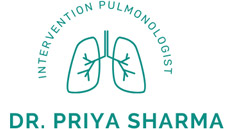What is Tuberculosis (TB)?

TB is an infectious disease caused by Mycobacterium tuberculosis. It primarily affects the lungs but can also impact other organs like the kidneys, spine, and brain. Recent Post Inhalers: Everything you need to know. Tuberculosis Flu and Cold: A Pulmonologist's Guide to Staying Healthy 1. What is tuberculosis (TB)? TB is an infectious disease caused by Mycobacterium tuberculosis. It primarily affects the lungs but can also impact other organs like the kidneys, spine, and brain. 2. How does TB spread? TB spreads through airborne droplets when an infected person coughs, sneezes, or speaks. It’s more likely to spread in crowded, poorly ventilated spaces. 3. What are the symptoms of active TB? Common symptoms include a persistent cough (lasting more than three weeks), blood in sputum, fever, night sweats, unexplained weight loss, and fatigue. 4. Can TB remain dormant in the body? Yes, this is called latent TB. The bacteria remain inactive and do not cause symptoms but can become active later, especially if the immune system weakens. 5. Who is at higher risk of developing TB? High-risk groups include people with weakened immune systems (e.g., HIV-positive individuals), those living in crowded conditions, and healthcare workers exposed to TB patients. 6. How is TB diagnosed? Diagnosis involves tests like the Mantoux skin test, blood tests, chest X-rays, and sputum analysis to confirm the presence of TB bacteria. 7. Is TB curable? Yes, TB is treatable and curable with a combination of antibiotics taken over 6 to 12 months. Completing the full course is essential to prevent drug resistance. 8. Does all TB spread to others? No, only active pulmonary TB is contagious. Latent TB and TB affecting other organs (extrapulmonary TB) typically do not spread. 9. What is the role of TB vaccines? The BCG vaccine provides partial protection against severe forms of TB, such as meningitis in children, but is less effective at preventing pulmonary TB in adults. 10. How long does it take for fever and other symptoms to settle after starting ATT (anti-tubercular treatment)? Symptoms like fever and fatigue usually start to improve within 2-4 weeks of starting treatment. However, full recovery depends on completing the entire course. 11. Is there any difference between Government ATT and Private ATT? Both government and private sectors use WHO-recommended treatment regimens. Government programs often provide free medications and monitoring, while private care may involve different levels of personalized attention and costs. 12. How many types of TB are there? TB can be classified into: 13. What should I do if I suspect TB? Seek medical advice immediately. Early diagnosis and treatment are crucial for recovery and to prevent spreading the disease to others.
Flu and Cold: A Pulmonologist’s Guide to Staying Healthy

What are Healthcare Researchers Doing to Address Health Equity? Recent Post What are inhalers, and why are they used? Tuberculosis Flu and Cold: A Pulmonologist's Guide to Staying Healthy 1. What is the difference between a cold and the flu? A cold is usually mild and caused by rhinoviruses, with symptoms like a runny nose, sore throat, and mild cough. The flu, caused by influenza viruses, has more severe symptoms such as high fever, chills, body aches, and fatigue. 2. Why is respiratory health important during cold and flu season? Respiratory illnesses can worsen conditions like asthma, COPD, and interstitial lung disease, potentially leading to severe complications like pneumonia. 3. How can I protect myself from catching a cold or the flu? Get a flu vaccine, practice good hygiene (handwashing, avoiding face-touching), and strengthen your immune system with a healthy diet, hydration, sleep, and exercise. 4. Does the flu vaccine protect against colds? No, the flu vaccine only protects against influenza, not the common cold. However, it reduces your risk of severe respiratory illness caused by the flu. 5. What should I do if I start feeling sick? Rest, stay hydrated, and use over-the-counter medications to manage symptoms. Seek medical advice if symptoms worsen or you have trouble breathing. 6. When should I see a doctor for a cold or flu? Contact a doctor if you experience persistent fever, difficulty breathing, worsening symptoms, or signs of complications like pneumonia. 7. How can I manage cold and flu symptoms at home? Use a humidifier, take medications like acetaminophen for fever, and drink warm fluids to ease symptoms. Rest is also crucial for recovery. 8. What precautions should I take if I have a chronic lung condition? Have a proactive care plan, monitor symptoms closely, and contact your pulmonologist if your regular medications are not effective or if symptoms worsen. 9. How can we reduce the spread of cold and flu in the community? Stay home when sick, wear masks if symptomatic, and follow vaccination recommendations to protect vulnerable populations. 10. Why is prevention better than cure for cold and flu? Preventing illness reduces the risk of complications, healthcare costs, and the burden on your immune system, ensuring overall better respiratory health.

